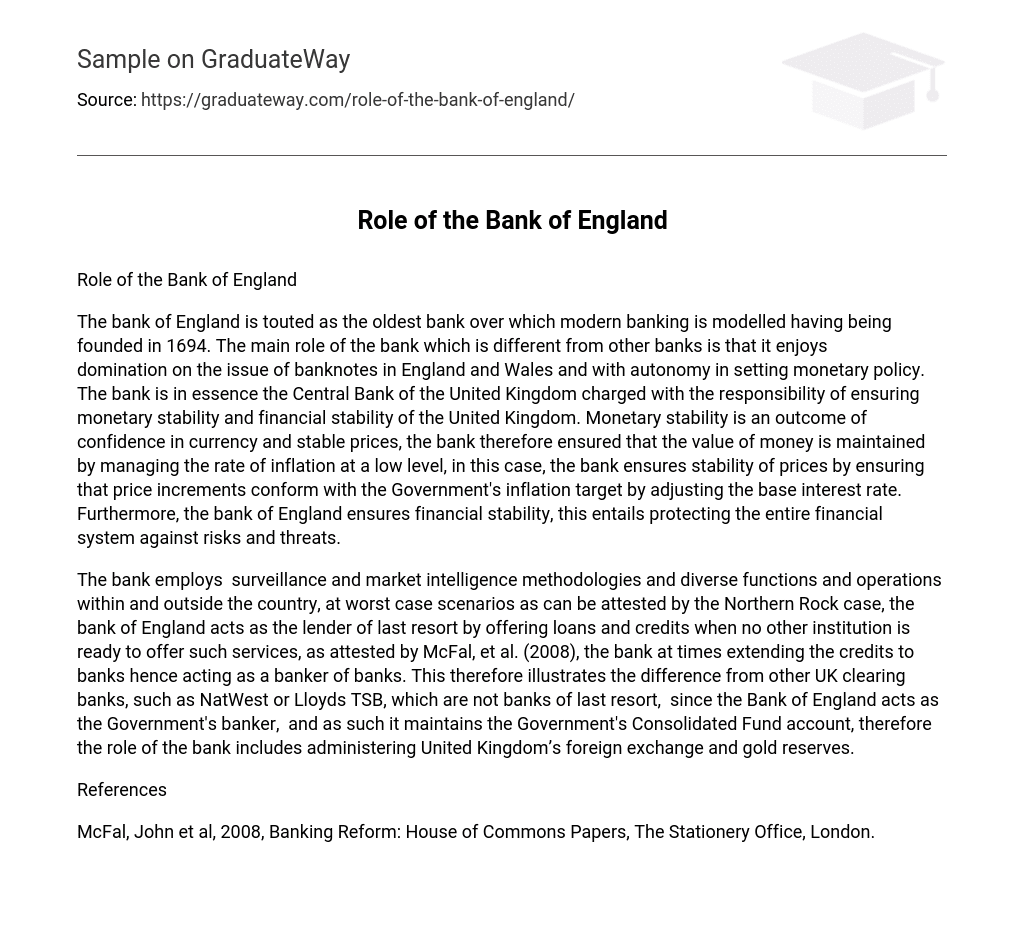The bank of England is touted as the oldest bank over which modern banking is modelled having being founded in 1694. The main role of the bank which is different from other banks is that it enjoys domination on the issue of banknotes in England and Wales and with autonomy in setting monetary policy. The bank is in essence the Central Bank of the United Kingdom charged with the responsibility of ensuring monetary stability and financial stability of the United Kingdom. Monetary stability is an outcome of confidence in currency and stable prices, the bank therefore ensured that the value of money is maintained by managing the rate of inflation at a low level, in this case, the bank ensures stability of prices by ensuring that price increments conform with the Government’s inflation target by adjusting the base interest rate. Furthermore, the bank of England ensures financial stability, this entails protecting the entire financial system against risks and threats.
The bank employs surveillance and market intelligence methodologies and diverse functions and operations within and outside the country, at worst case scenarios as can be attested by the Northern Rock case, the bank of England acts as the lender of last resort by offering loans and credits when no other institution is ready to offer such services, as attested by McFal, et al. (2008), the bank at times extending the credits to banks hence acting as a banker of banks. This therefore illustrates the difference from other UK clearing banks, such as NatWest or Lloyds TSB, which are not banks of last resort, since the Bank of England acts as the Government’s banker, and as such it maintains the Government’s Consolidated Fund account, therefore the role of the bank includes administering United Kingdom’s foreign exchange and gold reserves.
References
McFal, John et al, 2008, Banking Reform: House of Commons Papers, The Stationery Office, London.
;





